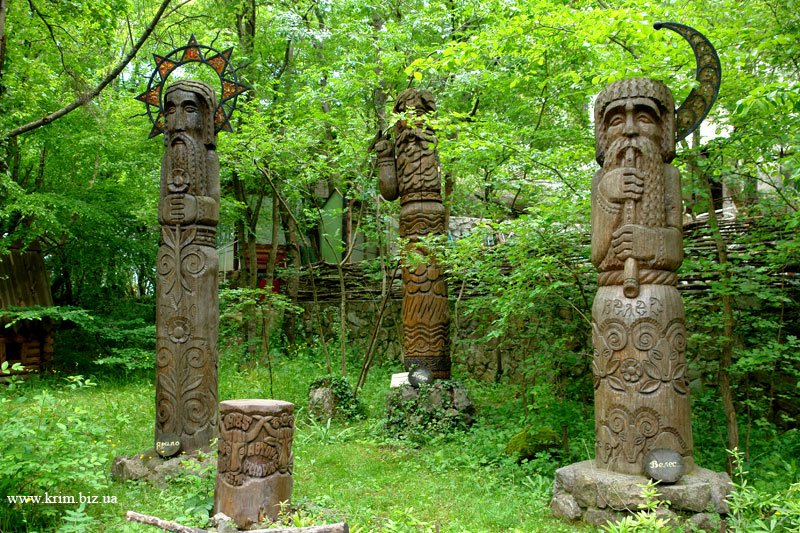Controversial Ancient Book Of Veles Remains An Unexplained Mystery
Ellen Lloyd - AncientPages.com - The Book of Veles is so controversial that it has been banned in Russia. This old document contains evidence of Genesis, evolution, and migration of Slavs.
Scientists who studied the book are perplexed and its validity has been questioned many times. Yet, no conclusive evidence has been presented that could shed more light on the controversy surrounding this mysterious book.
Book of Veles - The only known contour copy of a plank; the book is named after this plank, as it begins with "To Veles this book we devote..." Image source
The Book of Veles was discovered at the beginning of the 20th century in Ukraine, by Russian colonel Isenbeck, in an old, devastated castle. After the Russian revolution, Isenbeck emigrated from Russia and after years of wandering, he settled in Brussels. All the time Isenbeck carried planks with him. He stored them in a cardboard box, until one day Yuriy Mirolyubov, a Russian emigrant and scientist, discovered them and took them from Isenbeck. Mirolyubov was the first person who started to study these planks. He worked on decoding texts for more than 15 years.
After deciphering the 45 42 planks made of birch wood it turned out that the book comprised the history of Slavs from the 7th century BC until the 9th century AD. On some planks, besides letters there were carved bullheads, sun, different animals, so Mirolyubov concluded that they represented symbols of months. Letters were not the same size and shape so there was a possibility that different people wrote them and possibly at different times. After thorough research, Mirolyubov concluded that this was the oldest Slavic alphabet, later named Proto-Slavic. But there are no other known inscriptions written in these letters which were similar to Cyrillic.”
Veles by Andrej Šiškin
The Book of Veles describes how pre-Slavic tribes lived in the “land of seven rivers beyond the sea”. It remains a subject of speculation where this region is located, but it’s possible it is Semirechye, southeastern Kazakhstan.
The migration of the Slavs through Syria is described until the people eventually reached the Carpathian Mountains, during the course of which they were briefly enslaved by the king “Nabsur”. They settled in the Carpathian Mountains in the 5th century BC.
Several centuries appear to pass without much commotion. The 4th century is described in some detail. During this time the Slavs fought a number of wars with the Goths, Huns, Greeks, and Romans. Many references to Ermanaric and his relatives are present (placing this section of Book of Veles in the same historical context as the story of Jonakr’s sons, referenced in numerous European legends and sagas).
The Slavs eventually emerged victoriously. The period of the 5th to 9th centuries is described briefly; Khazars and Bulgars are mentioned. The book ends with the Slavic lands descending into disarray and falling under Norman rule.
Basically, there shouldn’t be any reason to ban the book and yet, it is banned in Russia. Several scientists who tried to study the document have been ridiculed and the carrier was put at risk. The main reason why it is considered a forgery is that the language of the text which is a mixture of different modern Slavic languages has erroneous and invented forms and no regular grammar.
Veles statue in Ukraine
One scientist who believed the Book of Veles is authentic is Professor Anatoly Klyosov who examined and studied the document thoroughly. Moreover, different modern editions of the book have different versions of its text.
Several scholars believe that the entire book is a product of the collaboration of the editors of this newspaper and Yuriy Mirolyubov, who later claimed to have found the book. Others believe that either the entire book or the only plank available was forged in the early 19th century by the Russian collector and forger Alexander Sulakadzev.
Although the book was banned in Russia, its neighboring countries had different views on its authenticity. In 1999, the book was included in the high school program in Ukraine as a genuine literary and historical piece.
The truth is we still do not know whether the Book of Veles is genuine or not and it remains one of many unexplained ancient mysteries that surround us in the world of science.
Written by - Ellen Lloyd – AncientPages.com
Copyright © AncientPages.com All rights reserved. This material may not be published, broadcast, rewritten or redistributed in whole or part without the express written permission of AncientPages.com
More From Ancient Pages
-
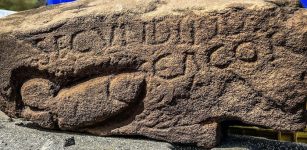 Ancient Graffiti Unearthed At Roman Vindolanda Reveals What One Roman Thought Of Another
Archaeology | May 27, 2022
Ancient Graffiti Unearthed At Roman Vindolanda Reveals What One Roman Thought Of Another
Archaeology | May 27, 2022 -
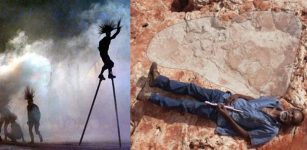 Aboriginal Creation Story Of Marala Was True – World’s Largest Dinosaur Footprints Confirm Ancient Creation Myth
Archaeology | Mar 29, 2017
Aboriginal Creation Story Of Marala Was True – World’s Largest Dinosaur Footprints Confirm Ancient Creation Myth
Archaeology | Mar 29, 2017 -
 Earliest Evidence Of Forest Management Discovered At The La Draga Neolithic Site
Archaeology | Jul 18, 2023
Earliest Evidence Of Forest Management Discovered At The La Draga Neolithic Site
Archaeology | Jul 18, 2023 -
 1,600-Year-Old Estate Of Wealthy Samaritan With A Rare Greek Inscription – Discovered
Archaeology | Mar 6, 2019
1,600-Year-Old Estate Of Wealthy Samaritan With A Rare Greek Inscription – Discovered
Archaeology | Mar 6, 2019 -
 ‘Graffiti’ Found On The Walls Of Dayu Cave, China
News | Aug 25, 2015
‘Graffiti’ Found On The Walls Of Dayu Cave, China
News | Aug 25, 2015 -
 Rakshasas: Night Wandering Race Of Demons And Warriors Fuelled By Kundalini In Hindu Beliefs
Featured Stories | Oct 8, 2019
Rakshasas: Night Wandering Race Of Demons And Warriors Fuelled By Kundalini In Hindu Beliefs
Featured Stories | Oct 8, 2019 -
 Ancient Society In The Sahara Desert Rose And Fell With Groundwater – Study
Archaeology | Oct 15, 2023
Ancient Society In The Sahara Desert Rose And Fell With Groundwater – Study
Archaeology | Oct 15, 2023 -
 Grave Of Amazon Warrior Who Lived In The Kingdom Of Urartu Discovered In Armenia
Archaeology | Nov 28, 2019
Grave Of Amazon Warrior Who Lived In The Kingdom Of Urartu Discovered In Armenia
Archaeology | Nov 28, 2019 -
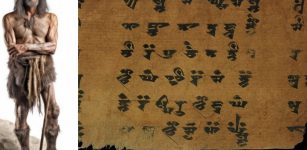 Ancient European Languages Shed Light On A Great Migration And Weather Vocabulary
Archaeology | Aug 14, 2023
Ancient European Languages Shed Light On A Great Migration And Weather Vocabulary
Archaeology | Aug 14, 2023 -
 Archaeologists Begin Excavations Of A Sunken Zhiyuan Warship That Sank In 1894
Archaeology | Oct 7, 2015
Archaeologists Begin Excavations Of A Sunken Zhiyuan Warship That Sank In 1894
Archaeology | Oct 7, 2015 -
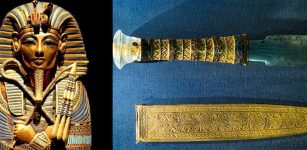 Tutankhamun Had An Ancient Dagger From Outer Space
Archaeology | Jun 1, 2016
Tutankhamun Had An Ancient Dagger From Outer Space
Archaeology | Jun 1, 2016 -
 On This Day In History: Gottfried Wilhelm von Leibniz – Famous Philosopher, Scientist And Mathematician Died – On Nov 14, 1716
News | Nov 14, 2016
On This Day In History: Gottfried Wilhelm von Leibniz – Famous Philosopher, Scientist And Mathematician Died – On Nov 14, 1716
News | Nov 14, 2016 -
 Rare Phoenician Necropolis Discovered In Andalucia, Spain Is Extraordinary, Scientists Say
Archaeology | May 2, 2022
Rare Phoenician Necropolis Discovered In Andalucia, Spain Is Extraordinary, Scientists Say
Archaeology | May 2, 2022 -
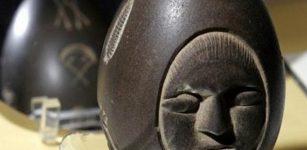 America’s Ancient “Mystery Stone” Remains An Unexplained Puzzle
Artifacts | Apr 17, 2014
America’s Ancient “Mystery Stone” Remains An Unexplained Puzzle
Artifacts | Apr 17, 2014 -
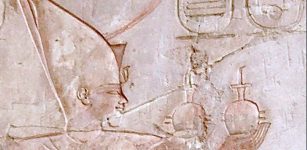 Magnificent Pre-Dynastic City Of Sais And Its Lost Neglected Ruins
Civilizations | Sep 29, 2020
Magnificent Pre-Dynastic City Of Sais And Its Lost Neglected Ruins
Civilizations | Sep 29, 2020 -
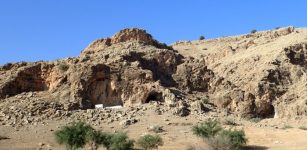 Early Humans In The Paleolithic Age Had A More Varied Diet Than Previously Assumed
Archaeology | Nov 29, 2023
Early Humans In The Paleolithic Age Had A More Varied Diet Than Previously Assumed
Archaeology | Nov 29, 2023 -
 Mysterious Pyramid-Shaped Tomb Discovered In China
Archaeology | Mar 15, 2017
Mysterious Pyramid-Shaped Tomb Discovered In China
Archaeology | Mar 15, 2017 -
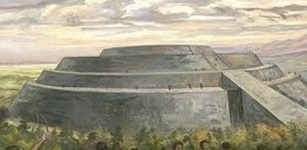 Cuicuilco Circular Pyramid: Ancient Astronomical Observatory And Place Of Power
Civilizations | Aug 24, 2021
Cuicuilco Circular Pyramid: Ancient Astronomical Observatory And Place Of Power
Civilizations | Aug 24, 2021 -
 Our New Relative: ‘Homo Luzonensis’ – New Species Of Early Human Found
Archaeology | Apr 11, 2019
Our New Relative: ‘Homo Luzonensis’ – New Species Of Early Human Found
Archaeology | Apr 11, 2019 -
 Hidden Manuscripts Reveal Ancient Sacred Wisdom Of The Gods And Surprises
Artifacts | Mar 23, 2019
Hidden Manuscripts Reveal Ancient Sacred Wisdom Of The Gods And Surprises
Artifacts | Mar 23, 2019



